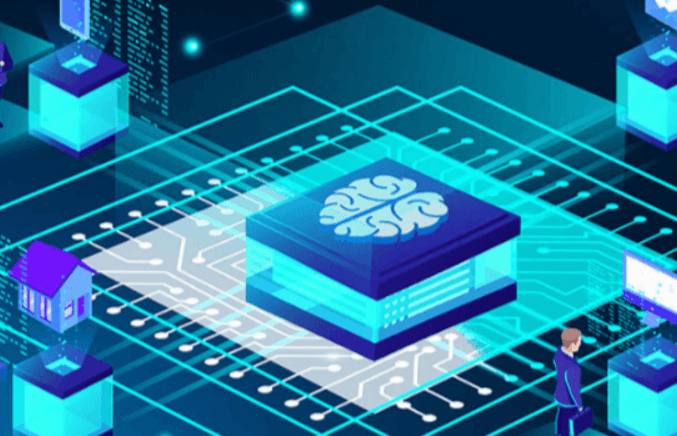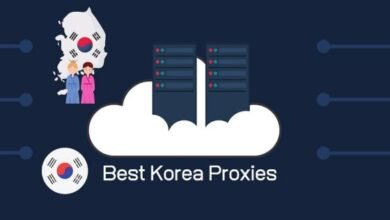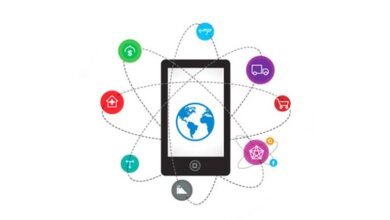What role does technology play in advancing global education, particularly in under-resourced areas?

Introduction:
In the modern world, technology has become an integral part of education. Its impact is profound, especially in under-resourced areas where traditional educational resources are scarce. This article delves into the significant role technology plays in advancing global education, highlighting how it fosters learning, bridges gaps, and empowers communities worldwide.
Technology as a Catalyst for Educational Transformation
Technology acts as a powerful catalyst for transforming education. By providing access to a vast array of digital resources, it enables students in under-resourced areas to access quality education that was previously out of reach. From e-books to educational videos, technology offers diverse learning materials that cater to various learning styles and needs.
Enhancing Access to Education Through Online Learning Platforms
Online learning platforms have revolutionized education by making it more accessible. These platforms offer courses and educational content that can be accessed from anywhere in the world. For students in remote or under-resourced areas, this means they can learn from top educators and institutions without geographical limitations.
Bridging the Digital Divide with Mobile Learning
Mobile learning, or m-learning, leverages the widespread use of mobile devices to deliver educational content. In areas where computers and internet access are limited, mobile phones serve as a lifeline for education. Apps and SMS-based learning modules provide interactive and engaging ways for students to learn on the go.
Empowering Teachers with Digital Tools and Resources
Teachers in under-resourced areas often face challenges such as lack of training and limited access to teaching materials. Technology equips them with digital tools and resources that enhance their teaching methods. Online training programs, digital lesson plans, and interactive teaching aids enable teachers to deliver more effective and engaging lessons.
Fostering Collaboration and Communication
Technology facilitates collaboration and communication among students and educators. Virtual classrooms, discussion forums, and social media platforms create communities of learners who can share ideas, seek help, and collaborate on projects. This interconnectedness enriches the learning experience and fosters a sense of global citizenship.
Overcoming Language Barriers with Translation Tools
In multilingual regions, language barriers can hinder education. Technology offers solutions through translation tools and multilingual educational resources. These tools help bridge language gaps, enabling students to learn in their native language while accessing global knowledge.
Providing Real-Time Feedback and Assessment
Digital assessment tools provide real-time feedback, allowing educators to monitor students’ progress and tailor their teaching strategies accordingly. This immediate feedback helps identify areas where students need improvement and offers personalized learning experiences.
Supporting Special Education Needs
Technology plays a crucial role in supporting students with special education needs. Assistive technologies, such as screen readers and speech-to-text applications, make learning more accessible for students with disabilities. These tools ensure that all students, regardless of their physical or cognitive abilities, have the opportunity to succeed.
Enhancing STEM Education
Science, Technology, Engineering, and Mathematics (STEM) education benefits significantly from technological advancements. Virtual labs, coding platforms, and simulation software provide hands-on experiences that are often unavailable in under-resourced areas. These tools inspire creativity and critical thinking, preparing students for future careers in STEM fields.
Leveraging Data Analytics for Personalized Learning
Data analytics in education helps create personalized learning pathways for students. By analyzing data on students’ performance and learning preferences, educators can tailor instruction to meet individual needs. This data-driven approach enhances learning outcomes and ensures that no student is left behind.
Promoting Lifelong Learning and Skill Development
Technology encourages lifelong learning and continuous skill development. Online courses, webinars, and educational apps offer opportunities for individuals to upskill and reskill throughout their lives. This is particularly valuable in under-resourced areas, where traditional educational opportunities may be limited.
Reducing Educational Costs
One of the significant advantages of technology in education is cost reduction. Digital textbooks, online courses, and open educational resources (OER) significantly lower the cost of education. This affordability makes quality education accessible to a broader audience, especially in under-resourced regions.
Enhancing Educational Content with Multimedia
Multimedia elements such as videos, animations, and interactive simulations make learning more engaging and effective. These tools cater to various learning styles and help explain complex concepts in a more understandable way. For students in under-resourced areas, multimedia content can make a significant difference in comprehension and retention.
Encouraging Self-Directed Learning
Technology empowers students to take control of their learning journey. With access to online resources, students can explore topics of interest at their own pace. This self-directed learning fosters independence, critical thinking, and a love for learning that extends beyond the classroom.
Connecting Education with Real-World Applications
Technology connects theoretical knowledge with real-world applications. Virtual field trips, augmented reality (AR) experiences, and project-based learning activities allow students to explore and understand real-world phenomena. This practical approach to education makes learning more relevant and engaging.
Developing Digital Literacy Skills
In today’s digital age, digital literacy is a crucial skill. Technology integration in education helps students develop essential digital skills such as information literacy, digital communication, and online safety. These skills are vital for navigating the modern world and are particularly beneficial for students in under-resourced areas.
Fostering Inclusivity and Diversity
Technology promotes inclusivity and diversity in education. Online platforms and digital resources cater to diverse learning needs and backgrounds. This inclusivity ensures that all students, regardless of their socio-economic status or geographical location, have access to quality education.
Expanding Educational Opportunities for Girls
In many under-resourced areas, girls face barriers to education. Technology helps overcome these barriers by providing safe and accessible learning environments. Online courses and digital resources empower girls to pursue education and build a better future for themselves and their communities.
Enhancing Vocational and Technical Training
Vocational and technical training is crucial for workforce development. Technology-enhanced training programs offer practical skills and certifications that improve employability. For individuals in under-resourced areas, these programs provide pathways to better job opportunities and economic empowerment.

Facilitating Remote and Blended Learning Models
Remote and blended learning models have become increasingly important, especially in times of crisis. Technology enables these models by providing flexible and accessible learning options. Students in under-resourced areas can continue their education without disruption, regardless of external challenges.
Driving Educational Innovation
Technology drives innovation in education by introducing new teaching methods, learning tools, and assessment techniques. This innovation leads to more effective and efficient educational practices that benefit students and educators alike.
Building Resilience in Education Systems
Technology helps build resilience in education systems by providing alternative learning solutions. In times of crisis, such as natural disasters or pandemics, technology ensures continuity of education. This resilience is vital for under-resourced areas that are often more vulnerable to such disruptions.
Enabling Global Knowledge Sharing
Technology facilitates global knowledge sharing by connecting educators and learners worldwide. Online forums, virtual conferences, and collaborative projects enable the exchange of ideas and best practices. This global perspective enriches education and fosters a sense of interconnectedness.
Supporting Teacher Professional Development
Continuous professional development is essential for teachers to stay updated with the latest educational practices. Technology offers various online training programs, webinars, and resources that support teachers’ professional growth. This ongoing development enhances the quality of education delivered in under-resourced areas.
Promoting Community Engagement and Involvement
Technology promotes community engagement and involvement in education. Online platforms enable parents, guardians, and community members to participate in the educational process. This involvement creates a supportive learning environment and encourages a collective effort towards educational success.
Encouraging Creativity and Innovation in Students
Digital tools and resources encourage creativity and innovation among students. From coding programs to digital art platforms, technology provides opportunities for students to express themselves creatively and develop innovative solutions to real-world problems.
Addressing Educational Inequality
Educational inequality is a significant challenge in under-resourced areas. Technology helps address this issue by providing equitable access to quality education. Digital resources and online learning platforms bridge the gap between privileged and underprivileged students, promoting fairness and inclusion.
Preparing Students for the Future Workforce
The future workforce requires a different set of skills than the past. Technology in education prepares students for this future by equipping them with critical thinking, problem-solving, and digital skills. These competencies are essential for success in a rapidly changing world.
Integrating Artificial Intelligence in Education
Artificial Intelligence (AI) is transforming education by providing personalized learning experiences. AI-driven tools can adapt to individual learning needs, offering tailored content and support. This personalized approach enhances learning outcomes and ensures that every student receives the attention they need.
Conclusion
The role of technology in advancing global education, particularly in under-resourced areas, is undeniable. From enhancing access to education to fostering lifelong learning, technology provides numerous benefits that empower students and educators. By leveraging digital tools and resources, we can bridge educational gaps and create a more equitable and inclusive global education system.
FAQs
What are the main benefits of technology in education? Technology enhances access to quality education, supports personalized learning, and reduces educational costs. It also fosters collaboration, inclusivity, and lifelong learning.
How does technology support teachers in under-resourced areas? Technology provides teachers with digital tools, online training programs, and interactive teaching aids that enhance their teaching methods and professional development.
What role does mobile learning play in under-resourced areas? Mobile learning offers accessible educational content through mobile devices, making it a crucial tool for students in areas with limited access to computers and the internet.
How can technology help overcome language barriers in education? Translation tools and multilingual resources enable students to learn in their native language while accessing global knowledge, thus bridging language gaps.
What is the impact of technology on STEM education? Technology enhances STEM education by providing virtual labs, coding platforms, and simulation software that offer hands-on learning experiences and inspire critical thinking.





